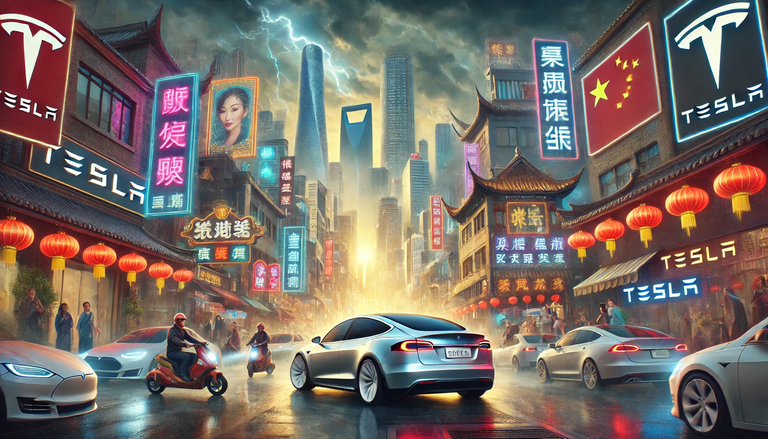As we delve into the complexities of the global electric vehicle (EV) market, Tesla's performance in China offers a fascinating case study of the challenges and opportunities facing international automakers in the world's largest EV market. Recent data paints a picture of resilience amidst fierce competition, but also highlights the hurdles Tesla must overcome to maintain its position.

Tesla, Navigating Growth in a Competitive Landscape
August Surge: A Glimmer of Hope
Tesla's August sales figures in China provide a ray of optimism in what has been a challenging year. The company sold 63,456 vehicles in China last month, marking its best performance of 2024 so far. This represents a substantial 37.27% increase from July, showcasing Tesla's ability to rebound quickly.
However, context is crucial. While impressive on a month-to-month basis, these numbers actually reflect a slight year-over-year decline of 1.91% compared to August 2023. This nuance underscores the intensifying competition Tesla faces in the Chinese market.
The BYD Behemoth and Local Competitors
To truly appreciate Tesla's position, we must consider the broader competitive landscape. BYD, the Chinese EV giant, delivered a staggering 370,854 vehicles in August alone – nearly six times Tesla's figure. Other local players like Li Auto and Leapmotor are also seeing significant growth, further intensifying the competition.
This isn't just about raw numbers. Chinese manufacturers are innovating rapidly, offering features tailored to local preferences and often at more competitive price points. Tesla's challenge isn't just to sell more cars, but to convince Chinese consumers that its products offer superior value in an increasingly crowded market.
Market Share Squeeze
The intense competition is reflected in Tesla's market share trends. In the broader New Energy Vehicle (NEV) market, which includes plug-in hybrids, Tesla's share has dipped to 6.18% in August, down from 9.04% a year earlier. Even in the pure battery electric vehicle (BEV) segment, where Tesla traditionally excels, its market share has declined from 13.18% to 10.88% year-over-year.
Strategies for Growth
Tesla isn't standing still in the face of these challenges. The company has employed several strategies to boost sales and maintain relevance:
- Zero-Interest Financing: Offering attractive financing options to make purchases more accessible.
- Expansion into Smaller Cities: Focusing on second and third-tier cities where the EV market is less saturated.
- New Model Variants: Plans for a six-seater Model Y could reignite interest in the lineup.
- Government Approvals: Securing spots on approved vehicle lists for government purchases.
These efforts seem to be bearing fruit, particularly in smaller cities where Tesla has seen significant growth. A study by China Merchants Bank reported a 78% year-over-year increase in Tesla sales in these areas in July.
The Export Equation
Tesla's Shanghai factory isn't just serving the local market; it's a crucial export hub. In August, 23,241 vehicles were exported, accounting for about 27% of the factory's output. However, this strategy faces potential headwinds, with the EU considering higher tariffs on Chinese-made EVs and Canada already imposing additional duties.
Looking Ahead: Opportunities and Challenges
As we look to the future, several factors will be critical in shaping Tesla's trajectory in China:
- Innovation Pipeline: The success of new offerings like the rumored $25,000 model could be game-changing.
- Geopolitical Factors: U.S.-China relations and trade policies will continue to play a significant role.
- Local Partnership Potential: Could strategic partnerships with Chinese firms open new doors?
- Autonomous Driving Progress: Advancements in this area could provide a significant competitive edge.
Investor Takeaways
For investors eyeing the EV sector, Tesla's performance in China offers valuable insights:
- Resilience Amid Competition: Tesla has shown it can adapt and grow even in a highly competitive market.
- Market Share Challenges: Maintaining market share in the face of strong local competition remains a key challenge.
- Global Strategy Importance: Tesla's ability to balance local market needs with its global strategy will be crucial.
- Innovation as a Differentiator: Continued technological leadership could help Tesla maintain its premium positioning.
While Tesla faces significant challenges in China, its recent performance demonstrates resilience and adaptability. The company's ability to navigate this complex market will be a key factor in its global success story. As investors, keeping a close eye on Tesla's strategies and market share trends in China could provide valuable insights into the company's long-term prospects in the global EV race.